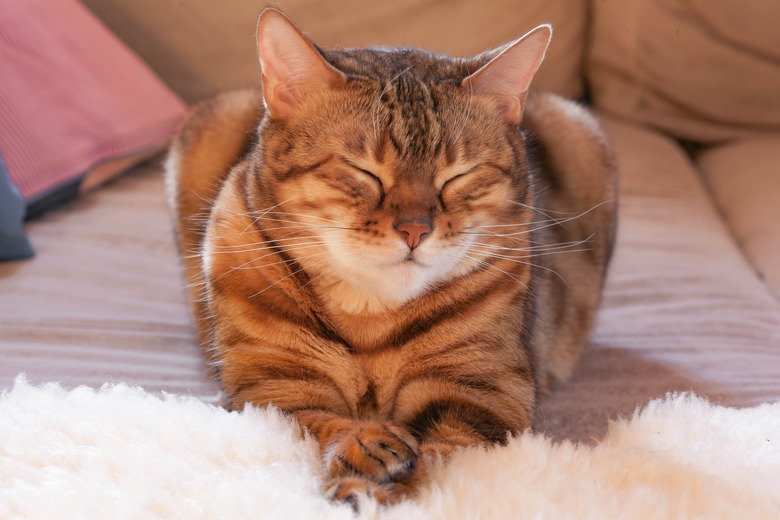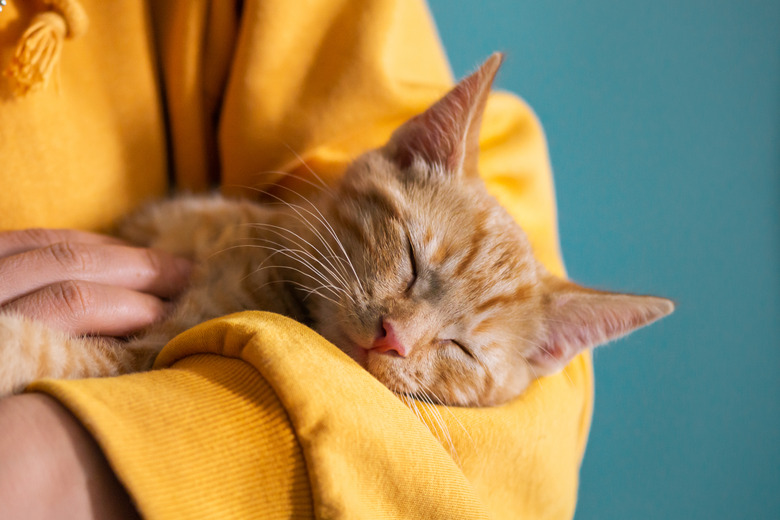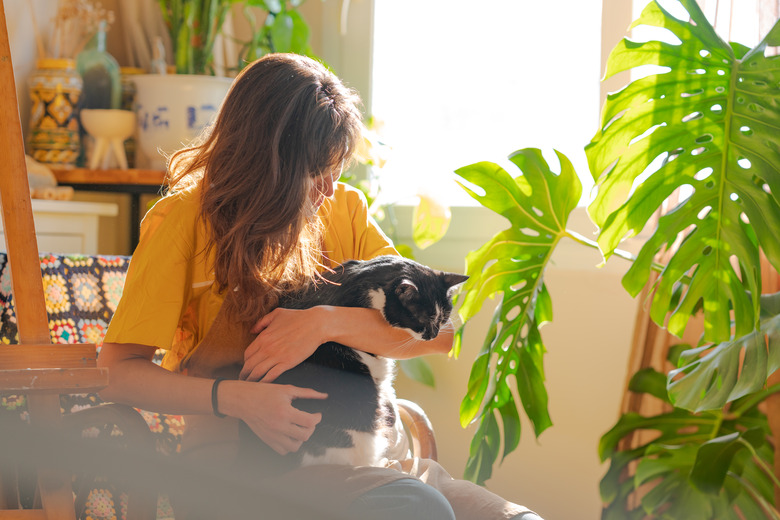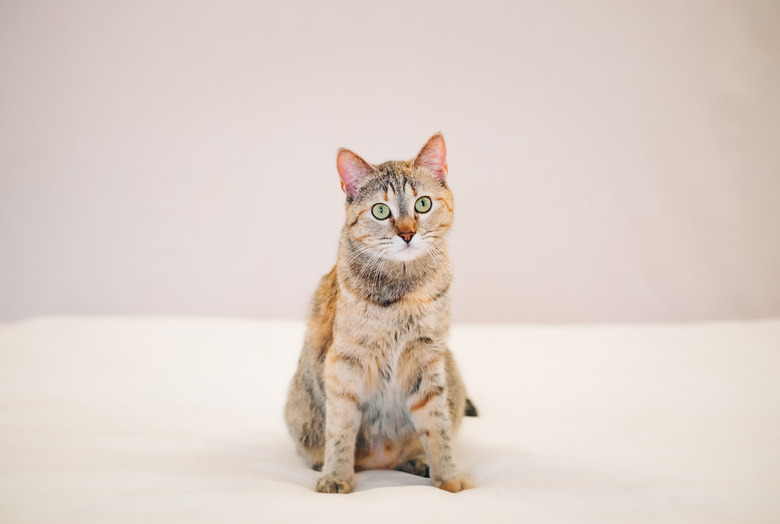Normal Blood Glucose Ranges For Cats
Maintaining a proper blood glucose level can be challenging because even a healthy cat's glucose level changes throughout the day. Normal cat glucose levels range from 80 to 120 mg/dL. If your veterinarian detects a higher than normal blood glucose level in your cat, they'll require a few more tests to determine the cause.
If your cat has diabetes, work with your veterinarian to ensure your cat's glucose level remains in a normal range throughout the day. Diabetes in cats is a serious condition, but it can be managed without impacting quality of life.
Normal blood sugar levels for cats
Normal blood sugar levels for cats
A cat's normal glucose range can climb higher than between 80 and 120 mg/dL if the cat is stressed or frightened. Blood glucose levels are ruled by insulin, the hormone produced by the pancreas. If your cat's pancreas isn't producing sufficient insulin, the cat's blood glucose levels rise.
In addition to stress, pancreatitis, diet, and infection also can cause higher than normal glucose readings. If your veterinarian detects a high level, they will conduct other tests to gain more insight. It can be helpful to refer to a cat blood sugar levels chart.
Normal blood sugar levels for cats chart
Normal blood sugar levels for cats chart
A glucose curve helps a veterinarian to ensure your cat is receiving the correct insulin dose by tracking how the feline's blood glucose level responds throughout the day. After the cat has their morning meal, an initial blood draw is taken just before the morning insulin injection. Blood samples are collected every two hours throughout the day for 12 hours.
The ideal blood glucose levels during a 12-hour period after dosing twice daily should be:
-
12:00 a.m. — 400 mg/dL
-
4:00 a.m.
—
220 mg/dL
-
10:00 a.m. —
approximately 100 mg/dL
-
2:00 p.m. —
approximately 125 mg/dL
-
8:00 p.m. —
220 mg/dL
-
12:00 a.m. —
approximately 400 mg/dL
Ultimately, the veterinarian strives to build an insulin dosing schedule that will keep your cat's level of glucose between 120 and 300 mg/dL throughout the day. Glucose curves are performed every two to four months after the cat is stabilized.
What affects normal blood sugar levels in cats?
What affects normal blood sugar levels in cats?
Many factors impact a cat's blood sugar level. But high blood sugar in cats, also called hyperglycemia, is usually caused by one of the following if the cat is not diabetic:
- Pancreatitis resulting in an inability to produce insulin
- Normally occurring hormones, especially in female cats
- Poor diet or low-quality food
- Infections of the body, including teeth or urinary tract infections
Testing for feline diabetes
Testing for feline diabetes
The veterinarian will first consider whether your cat is demonstrating clinical signs of diabetes, including weight loss or gain and increased thirst, urination, and appetite. Since the stress of a veterinary visit can cause a cat's glucose level to spike, the veterinarian will want to rule out that the high level isn't a stress reaction. A complete blood count as well as a blood chemistry profile (blood test) will help determine if there are other potential illnesses or conditions present that could cause an elevated glucose level.
A urinalysis also is helpful because when a cat's glucose level is higher than 240 mg/dL, glucose will be found in the urine. The urine might contain other hints of diabetes, including the following:
- Pus
- Bacteria
- High numbers of ketone bodies or ketoacidosis
Tests, symptoms, and medical history will help confirm a diagnosis of diabetes as well as whether the problem is related to an underlying condition.
Managing cat glucose levels with insulin
Managing cat glucose levels with insulin
If there's something causing the increased glucose level, treatment will address the root cause of the hyperglycemia. If the diagnosis is feline diabetes, your cat will likely need regular insulin injections, also called insulin therapy, to manage their glucose level. Since a fluctuation in blood glucose levels can have a significant impact on your cat's health, it's critical to follow the veterinarian's directions.
Even when you follow medical instructions, chances are your cat's insulin needs will change over time. That means you'll need to stay in regular contact with your veterinarian to ensure your cat is getting the proper amount of insulin. You might work with your veterinarian to do this at home with a handheld glucose meter, or you might rely on the veterinarian to do the testing with a blood glucose curve or cat blood sugar levels chart.
Fructosamine test to determine cat glucose levels
Fructosamine test to determine cat glucose levels
While the glucose curve is a snapshot of half a day, a fructosamine test can provide a map of where the blood glucose levels are over several weeks. Fructosamine is a compound that forms when certain blood proteins and blood sugar come together. Fructosamine is a stable compound that forms slowly, yet its presence indicates consistently high blood sugar.
Cat glucose levels home monitoring
Cat glucose levels home monitoring
Paying attention to your diabetic cat's behavior will give you a good idea of how they are doing. For instance, changes in their energy, food and water intake, and urinary habits are indicators that your cat might need adjustments to their dose of insulin. A urine test strip will also help measure the glucose levels.
When you're ready to dip your cat's urinary test strip, replace the cat litter box with a clean box lined with nonabsorbing plastic pellets instead of standard absorbing kitty litter. Strips change color depending on the presence of glucose in the urine. Your veterinarian will guide you when interpreting the results and the resulting impact on the insulin dosage.
How to draw blood from your diabetic cat
How to draw blood from your diabetic cat
If you have a diabetic cat, you will likely have to test their blood sugar levels frequently, which will require some practice. Carefully draw blood from your cat using the following process:
- Warm your cat's ear by holding it between your fingers for a minute or two.
- Using a sterile hypodermic needle, quickly prick a clean, hairless spot on your cat's ear.
- When a small drop of blood appears, smear it on the glucose test strip.
- Gently press a cotton ball on your cat's ear until the bleeding stops.
How to monitor a cat's blood sugar levels
How to monitor a cat's blood sugar levels
After you have drawn a small drop of blood from your cat's ear and have placed it on a glucose strip, insert the strip into a glucometer and record the results. You will need to track results over time to share with your veterinarian. A glucometer is a handheld device that accurately provides a blood glucose reading with little effort.
However, if you don't have a glucometer, you'll have to use a blood glucose test. With this test, a drop of blood is placed on a specific kind of padded strip. After a short time, the color changes, and you must compare the color to a chart to determine your cat's blood sugar level.
The bottom line
The bottom line
Occasionally testing the blood glucose level of your cat is good practice because it can help determine if your cat has diabetes. If your cat has diabetes, you will need to work with your veterinary hospital to monitor your cat's blood sugar levels, likely using a glucometer, and give your cat regular insulin injections to maintain desirable levels. Ideally, a healthy cat's glucose level ranges between 120 and 300 mg/dL throughout the day.



